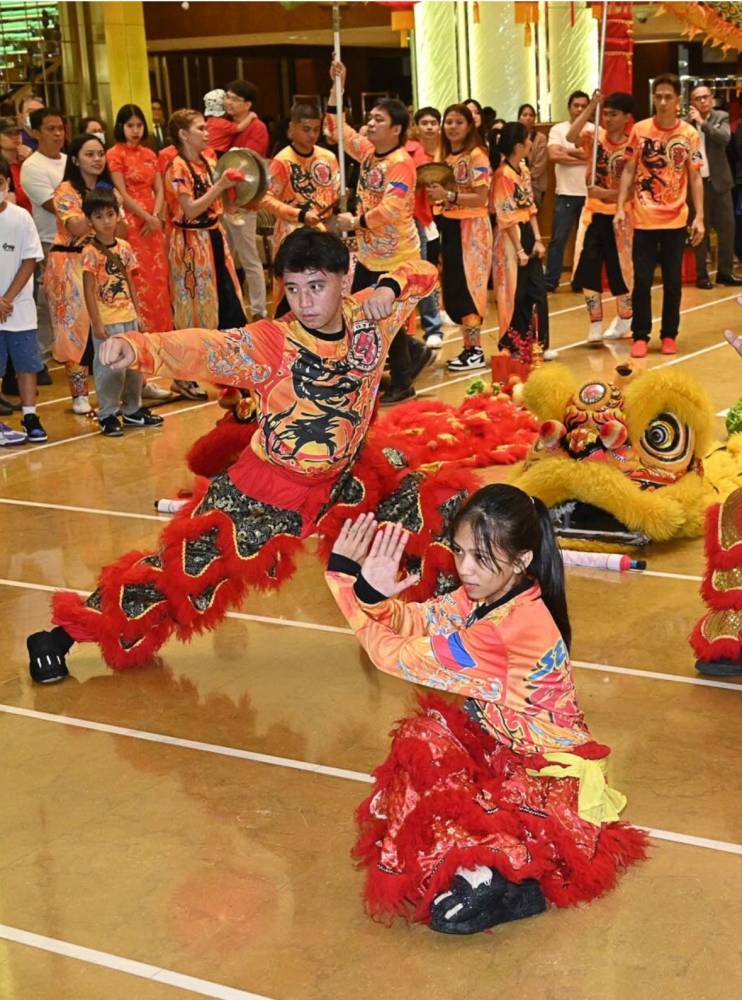Wine, fireworks and an exceptional meal in faraway Alfonso
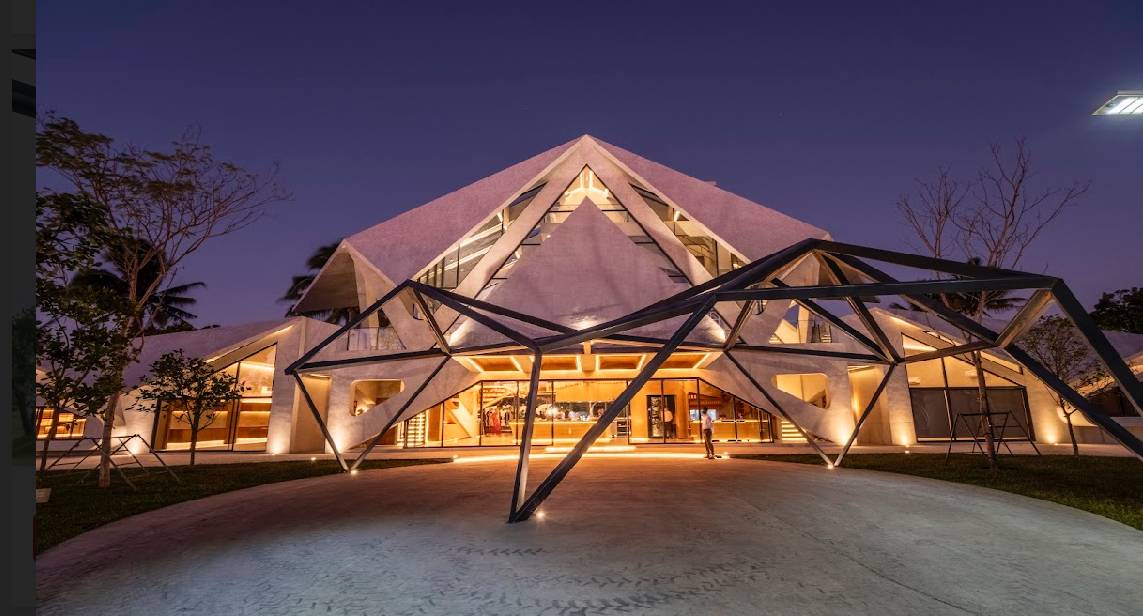
The road to the beginning of an auspicious year was 82.4 km away from our residence. Google marked out a two-hour route to Asador Alfonso in Alfonso, Cavite, which ended in a sprawling private property. It was early evening when the road opened up to the modern lines of the building set against the backdrop of the night sky. The stunning visual welcome was heightened by curated illumination, increasing the anticipation of exceptional experiences to come.
Asador Alfonso is the Calma countryside home with spaces open for private dining. The invitation to dinner was especially enticing as Chele Gonzalez, the culinary master behind Gallery by Chele, the epicurean destination internationally recognized as one of Asia’s 50 Best Restaurants, was going to be there to supervise the Spanish-inspired meal.
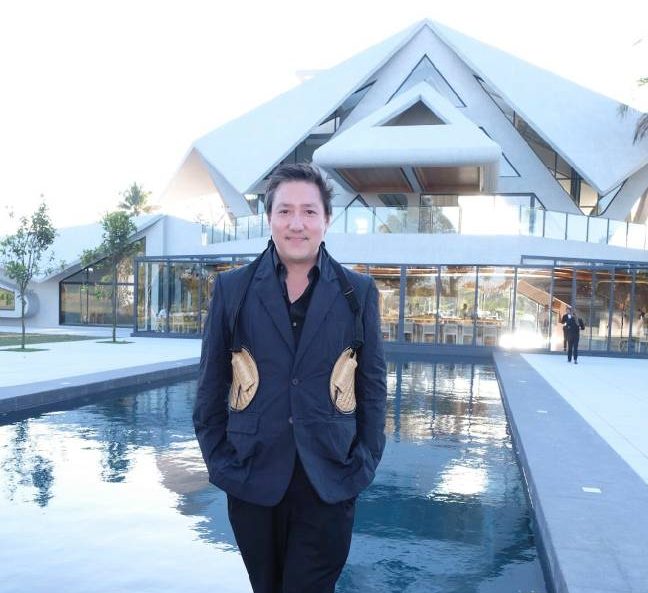
The nature-inspired interiors were designed by architect, visual artist and interior designer Carlo Calma, also a recipient of international architecture awards. The application of wood to create undulating lines in a sinuous pattern across the ceiling imprinted his signature organic design sensibility.
A purple lion, followed by an airborne dragon slithering to the beat of shigu drums, emerged from the garden and danced into the dining room as we were entering. Cocktails had been served by the poolside and dinner was about to commence.
Spain Ambassador Miguel Utray was seated to my right. Across were two other Spanish nationals with a strong affection for the Philippines, Fermin and Federico Segarra. They would prove to be our gastronomy guides to the food prepared by chef Rodrigo Osorio, who was helming the kitchen.‘Carabinero’ and ‘lechazo asado’
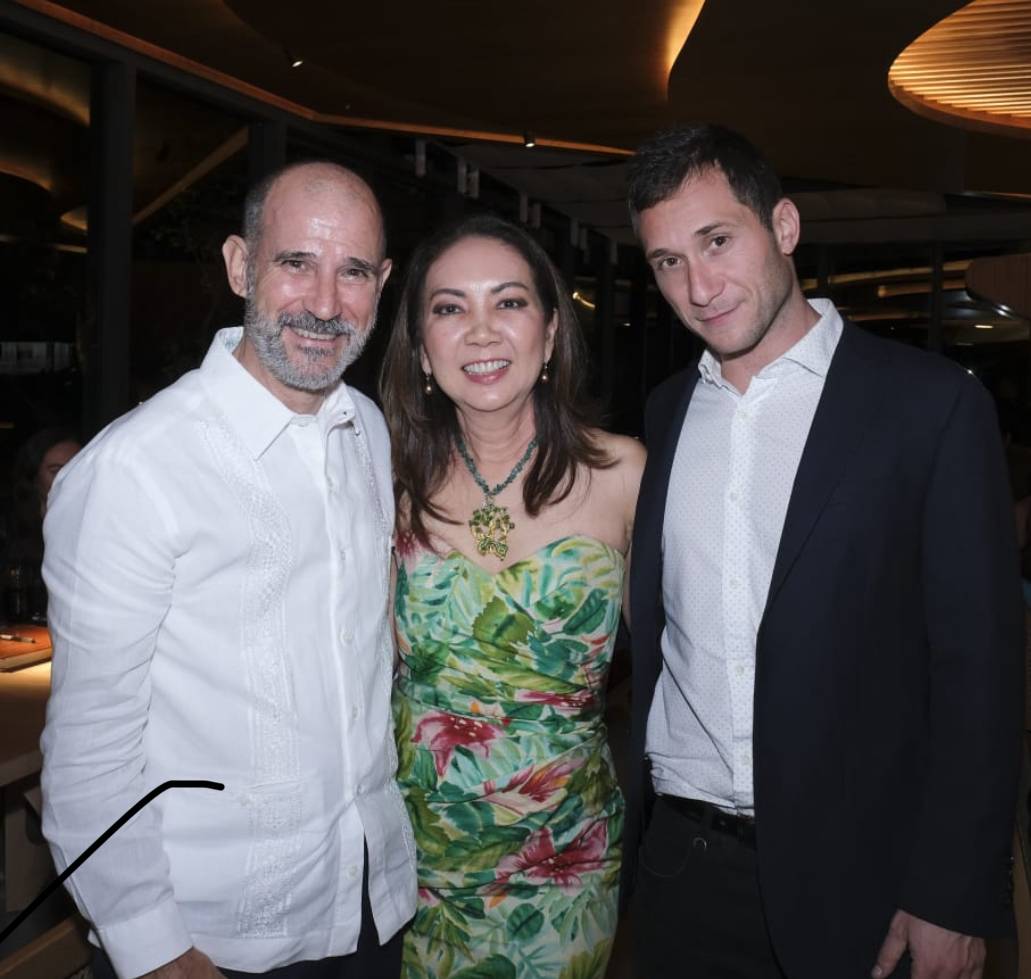
As soon as the appetizers were served, there was no holding back. Homemade jamon de Wagyu, heirloom tomato with confit tuna onions in Arbequina olive oil, and the dish called Matrimonio with charcoal roasted peppers, tawilis boquerón and Spanish anchovies came in succession, with Chele prefacing each with an explanation of origin.
It was the carabinero that he particularly impressed upon us as a specialty procured from abroad. Almost all the other ingredients were locally sourced. He said that the flat grilled red prawn laid out simply on a white platter was consumed by first taking the meat from the shrimp head, sucking up the juice first before finishing off the rest of the crustacean meat. Federico demonstrated how to get the most out of the sweet, briny shrimp washed down with Spanish wine. It was stellar and a fitting preamble to the main course, a slow roasted Spanish suckling lamb rack.
The lechazo asado, typically served in Castilian provinces, was cooked in the traditional way in a specially built wooden stove. The weeks-old lamb was the highlight that relegated the sidings of stewed potato and salad greens to token bites. Our Spanish dining companions said that it was very difficult to get the meat of that quality here in Manila if at all. Not a morsel of the dish was left on the plate.
Dessert was a two-fold treat of chocolate mousse, guava and tulles, and flan de Teresa, from a family recipe of Chele’s mom, Terry.
More wine was poured before guests were invited outside to watch the fireworks shooting up from behind a large portrait of Pabling Calma, Carlo’s tribute to his beloved father. Sparklers were lit and the merrymaking continued through the chilly night. The distance to the city no longer seemed long with the prospect of another gustatory experience in Asador Alfonso.
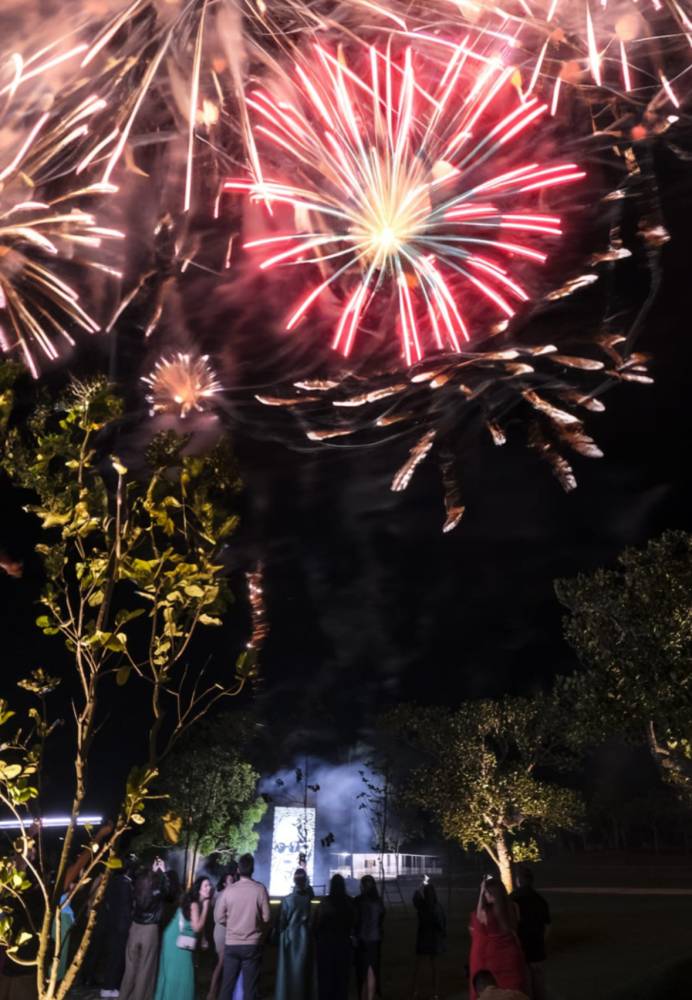
Dotting the lion
A day after the Wood Dragon’s year began, I wore green to the Grand Hyatt Manila Chinese New Year festivities. The shade of grass and bright leaves was the recommended color, a nod to nature, growth, vitality and health.
The ceremony began with performers donning the lion head and body and settling into a resting position. I was given a brush and instructed to dip it into the provided pot of red ink. Once done, I dotted the eyes to give sight, the nose so it could smell, the mouth to enable it to eat and the ears so it could hear.
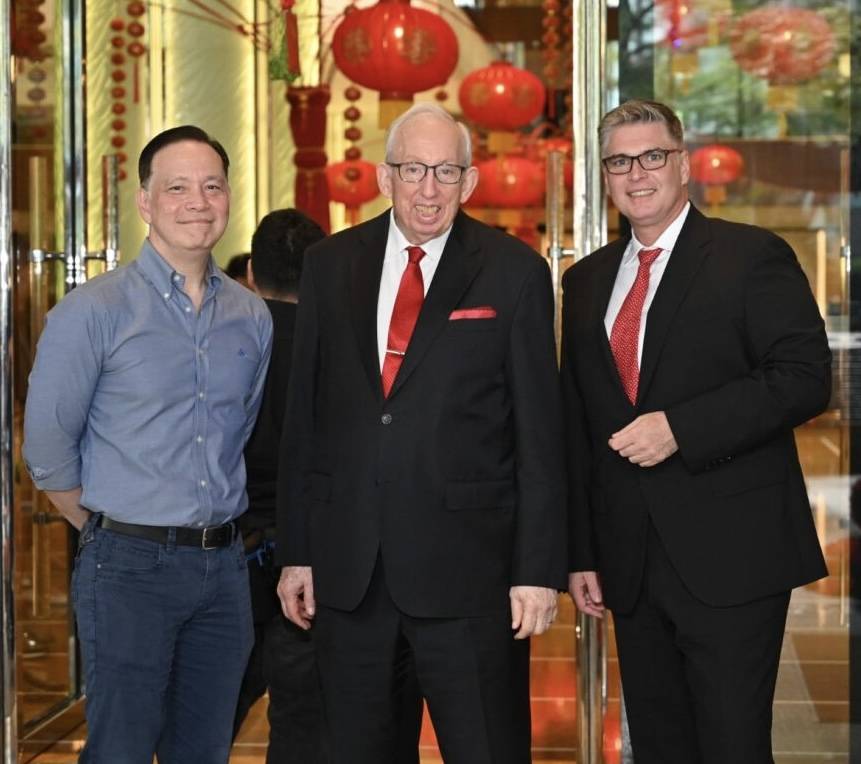
This was the life-awakening ritual that concluded with painting a line from the head to the tail to the paws. Then, on cue at the beating of the shigu, the lion began to dance around the driveway, emulating the movement of the beast that was once thought to be a mythical animal in ancient China, like the dragon. The lion returned to offer fruits from the mouth and awaited to be fed red envelopes with money inside. The greens were also consumed but “spat out,” which, according to lore, was favorable to the one on whom the vegetable landed.
The lions pranced into the hotel lobby followed by the dragon dancers. Standing in the foreground together with fellow “dotters” GHM president Hans Hauri, Federal Land president Tom Mirasol and general manager Nick Priesnitz, the lions handed each of us a scroll with Chinese characters that translated to new year greetings for health, wealth and good fortune.
‘Every man’s birthday’
A few days later, Singapore Ambassador Constance See and her husband Max hosted eight guests at the envoy’s residence.
It was a different slice of life that Constance literally brought to the table that evening. She prepared a colorful yusheng platter to celebrate renri, or “every man’s birthday,” a Chinese New Year tradition in Singapore.
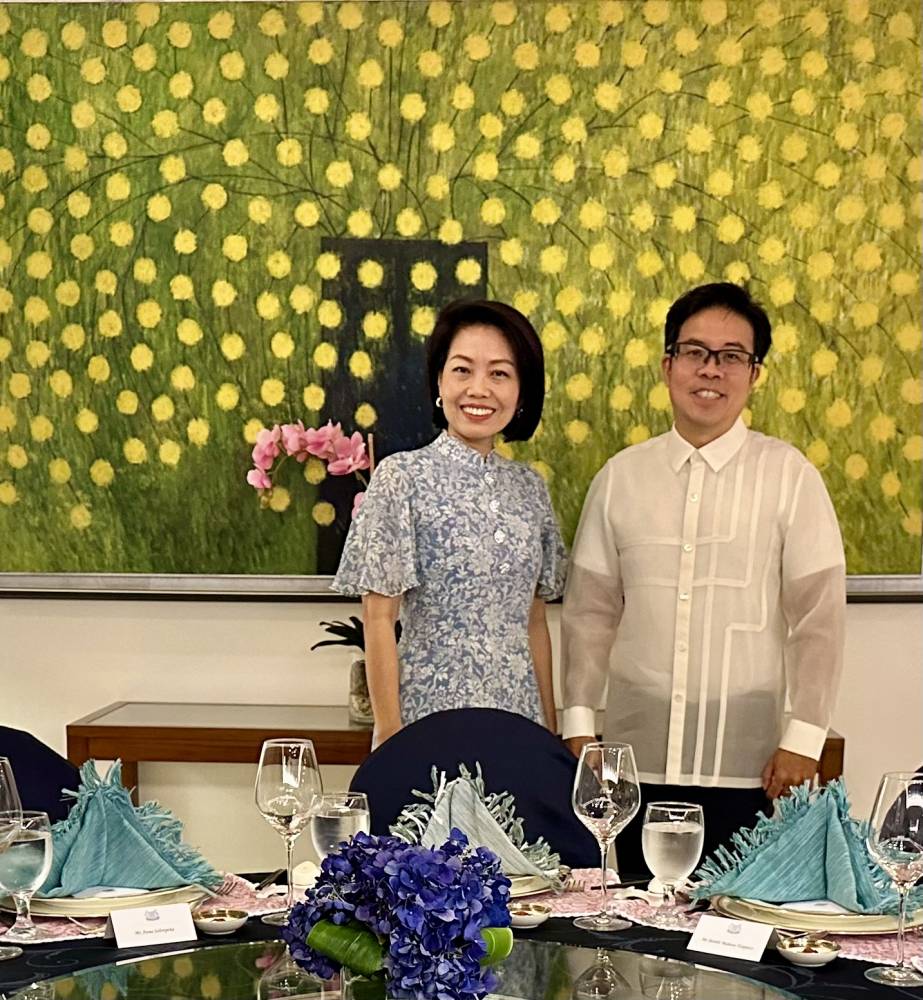
Constance gathered all of us around a small round table where the ingredients of the prosperity salad were arranged. She declared, “Nian nian you yu,” as the fish slices were added, a declaration for abundance and prosperity over the years. The succession of food added was accompanied by similar auspicious statements and when all was done, we were instructed to toss the salad all together with our chopsticks. The higher the toss, the greater the good fortune and prosperity. It was a colorful mess which we ate afterwards in boodle fight fashion.
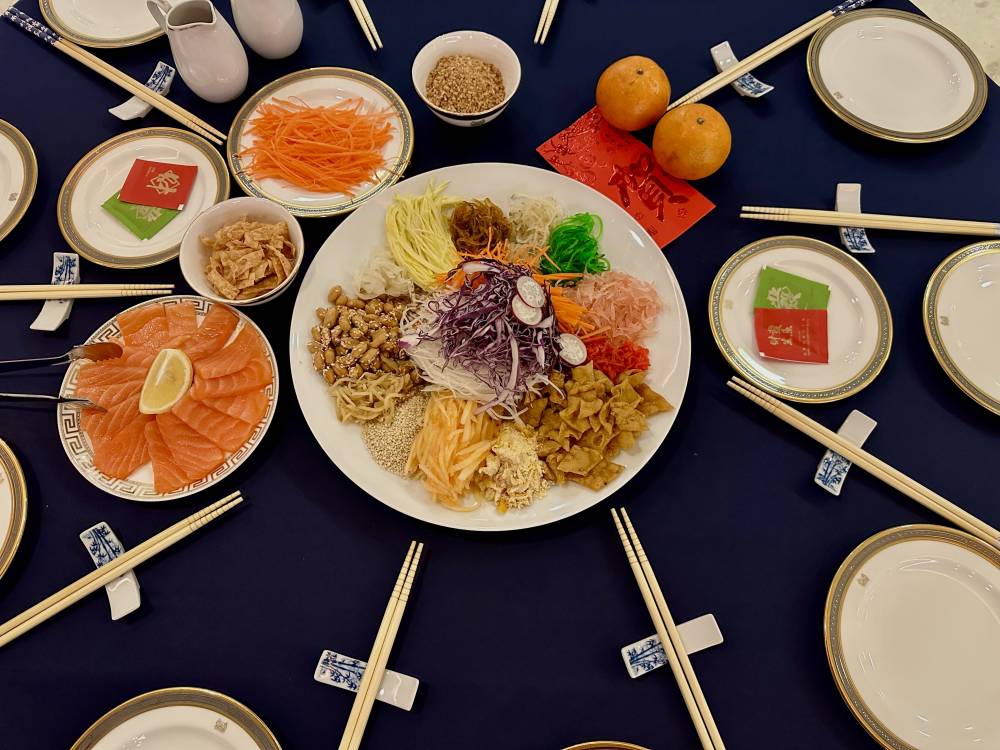
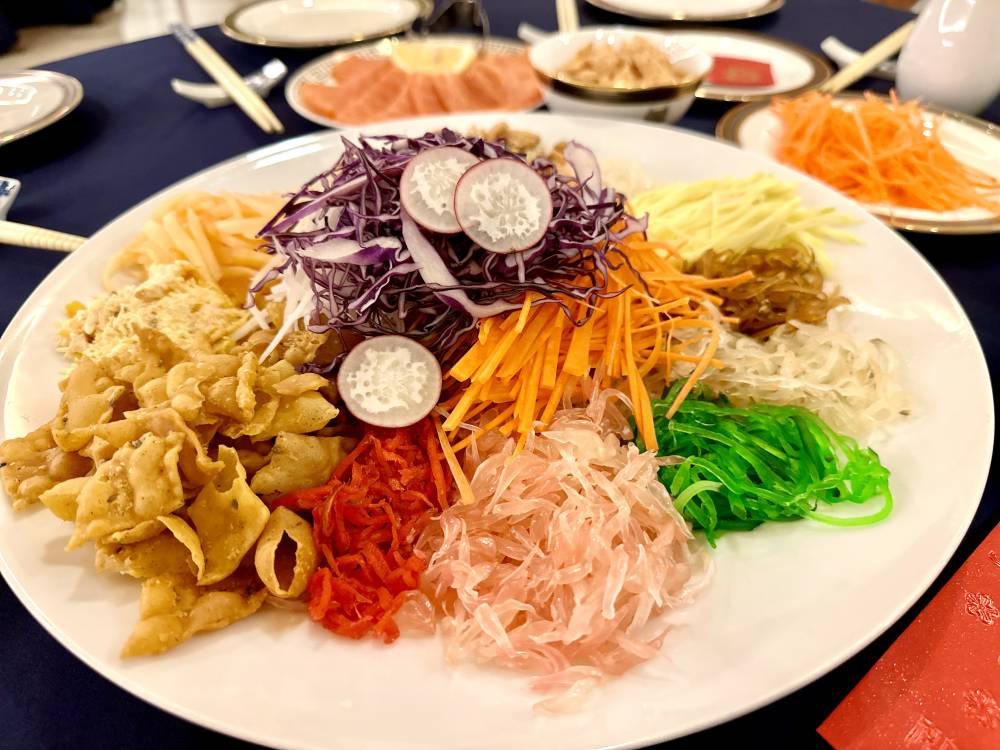
The sit-down dinner followed with popular Singaporean cuisine, beginning with prawn laksa and Hainanese chicken with rice, which Filipino guests to the embassy events look for every time, the amiable diplomat said.
Servings of chilled mango purée with pomelo were served but Shin, the childhood friend of the ambassador who was visiting Manila, brought kueh lapis, or layered cake made with 40 eggs. It was a very special finish to a satisfying dinner, replete with culture, tradition and congenial company. Outside the moon was beaming overhead, and while there were no dragons dancing or lions cavorting, the lo hei left an aftertaste of good things to come.













